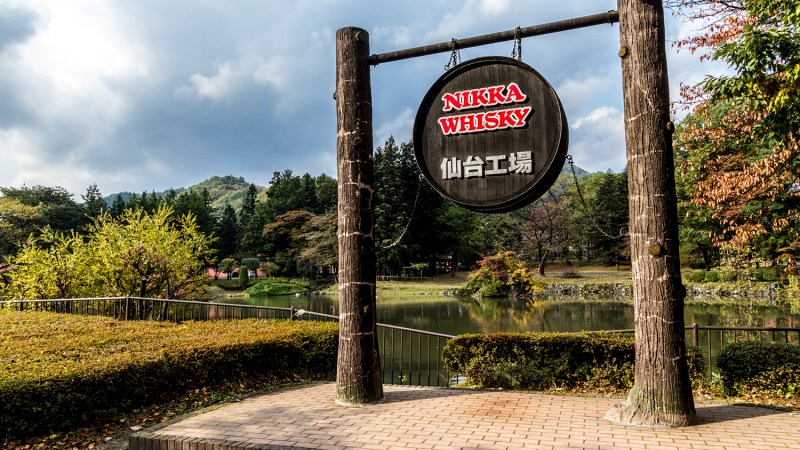

Masataka Taketsuru was born into a sake brewing family, but his passion, he found out in his twenties, was for a different kind of alcohol. Though he was groomed to work in the family business — which had been around since the 1700s — Taketsuru fell in love with Scotch whisky while enrolled at the University of Glasgow, becoming the first Japanese person to study the art and science of making whisky. At the same time, Shinjiro Torii was using his family’s fortune so that he could pursue his dreams of making Japanese whisky, which culminated in the construction of the Yamazaki distillery, which was at that point called Kotobukiya.

In 1920, after two years abroad where he learned about and worked in Scottish distilleries, the brand likes to say Taketsuru returned with two things — the ability to make whisky and his wife, Rita. A few years later, he began working with Torri to build Yamazaki, then produce the first whiskies there. When Taketsuru signed on, he signed a ten-year contract, so when that ended in the early 1930s, he struck out on his own, founding what would become the Nikka Whisky Company and building his first distillery — the Yoichi distillery — in 1934. It was at this point that the rivalry between the Nikka and Suntory brands began.
The first whisky from either company to achieve renown was Suntory Kakubin, which was released in 1937. (It wasn’t the first offering from Suntory, but the first — named Shirofadu or White Label — failed miserably.) Nikka followed with their first whisky, Nikka Whisky, in 1940.
Since that point, both companies grew in size and scope. Other distilleries were established (including Nikka’s Miyagikyo and Suntory’s Hakushu and Chita distilleries), and many thrived for a time. As the second half of the twentieth century passed into the twenty-first, some of those distilleries, which had seen great success in the 1970s and 1980s were forced to close, while some closed for a time before being reopened thanks to a renewed interest in Japanese whisky.

That renewed interest is thanks to a couple of things. First, the whiskies are damn good. So good, in fact, that multiple Japanese whiskies have won major awards (like when Yamazaki Single Malt Sherry Cask 2013 was named best whisky in the world in Jim Murray’s Whisky Bible 2015). To a lesser extent, though you might consider it a factor (at least for some, maybe), the 2003 movie Lost in Translation shows Billy Murray drinking Suntory. If nothing else, it may have alerted a few people to the existence of Japanese whisky.
With so many people now clamoring for Japanese whiskies, there’s been a decline in the availability of many age statement Japanese whiskies, as eager drinkers around the world snatch them up whenever possible.
There are, though, thankfully, plenty of non-age statement Japanese whiskies (and some age statement whiskies still!) making their way to our shores from the nine open distilleries in the country. And for that, we are grateful.
Images courtesy of The Nikka Whisky Company.
Editor’s Note: This article is part of The Manual’s larger Journey to Japan travel guide. Over the course of a month, our writers had the pleasure of experiencing Japan in all its forms, from high-rise bars in Tokyo to traditional tea ceremonies in Kyoto. We hope this series will not only inform, but inspire you to take your own trip to the Land of the Rising Sun.
Editors' Recommendations
- Chivas Releases Extra 13 Collection Scotch Whiskies
- The Final Game of Thrones Single Malt Whisky Is Better Than the Series Finale
- William Grant and Sons Launches New Single Malt Whisky Brand
- Ardbeg Drum is the Newest Ardbeg Day Special Scotch Whisky Release
- The Balvenie Stories Tell of the Magic Contained Within Scotch Whisky



